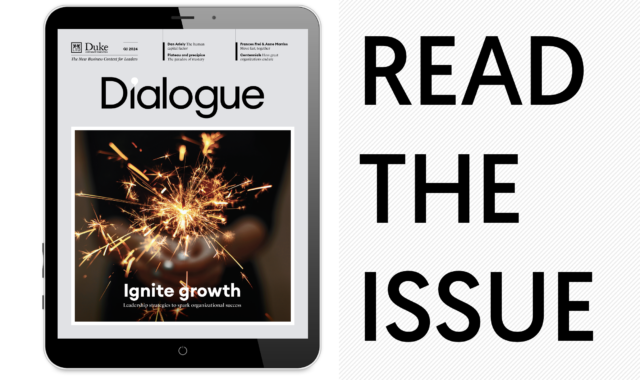“The global economy is limping along, not sprinting.” Such was the gloomy assessment of the International Monetary Fund (IMF) in its World Economic Outlook of October 2023. The recovery from Covid-19 and the invasion of Ukraine remains “slow and uneven”; economic activity still falls short of its pre-pandemic path. The IMF forecasts global growth slowing from 3.5% in 2022 to 3% in 2023 and 2.9% in 2024. (They are forecasts that will hardly be improved by the latest, tragic wave of violence in the Middle East, especially if fears of a broader conflict are realized.)
Changing the trajectory of growth is, of course, a central focus for policymakers and politicians around the world. But it is also a perennial priority for leaders tasked with steering their organizations through the circumstances identified by the IMF – and whatever the economists say, leaders know there are still opportunities out there. Trends are there to be beaten; odds are there to be defied. When challenges mount, brilliant leaders find new ways to win. So as enter 2024, the question at the heart of this issue of Dialogue is simple. How can leaders ignite growth?
One of the clearest answers to emerge is: through their people. When employees are engaged and striving to deliver shared goals, the energy in an organization is tangible, the momentum for growth irresistible. The converse is equally true. As Vishal Patel reflects, when a business opts for convenience, it is doomed to irrelevance. We instinctively know the difference, yet it has been hard to quantify.
That is changing. It is now possible to measure human capital accurately – and the evidence shows that it’s a powerful catalyst for growth, writes Dan Ariely. It may be a cliché, but it’s true: people are an organization’s most valuable asset.
Are leaders making the most of those assets? Human capital is unique in how it can be nurtured, which is why personal development should be high on the agenda for every leader seeking to spark growth. One of the biggest challenges is how to keep developing; as Whitney Johnson and Amy Humble explain, the plateau of high performance is often followed by a precipice. The only option is to jump – and start a new phase of growth.
Elsewhere in our Focus section, Jamie Jones explains how leaders can build their innovation muscle and create the organizational conditions for innovation to flourish, while Bruce Whitfield shares success stories from innovative businesses in South Africa. Jennifer Sundberg and Pippa Begg emphasize the importance of collective intelligence; great teamwork trumps individual brilliance every time. That makes inclusion essential, as Frances Frei and Anne Morriss write. “Whatever problem you’re trying to move fast and fix, you’re going to get better and faster solutions with an inclusive team of complex humans who are contributing to their capacity.”
Of course, growth is not the goal for everyone. As Alex Hill explains in his article on Centennials – great organizations that have endured for more than 100 years – some businesses aim to get better, not bigger. The key? Combining a stable core with a disruptive edge. For others, the goal is simpler: survival. Alain Liebaert shares what he has learned about leading through disruption – and how his business stayed profitable.
Finally, we welcome guest finance columnist Joe Perfetti as Phil Young lays down his pen after many years in the post. Phil stands as a Dialogue great, and we wish him all the best for the future.
Enjoy the issue.
Patrick Woodman is editor of Dialogue.

